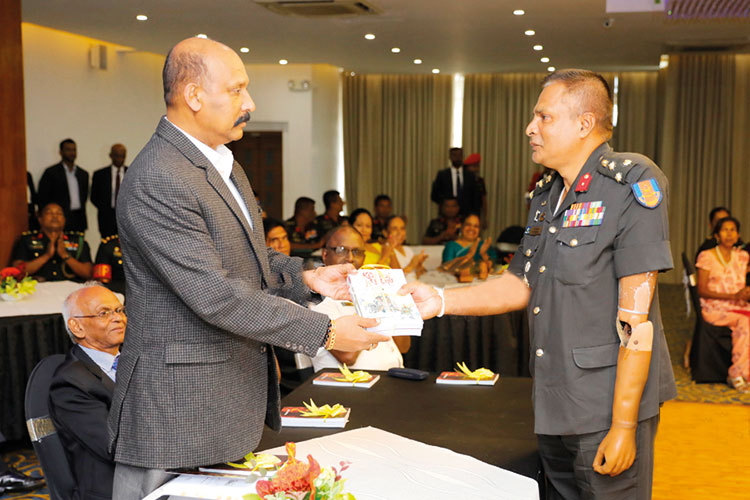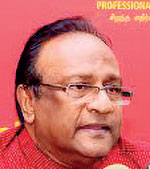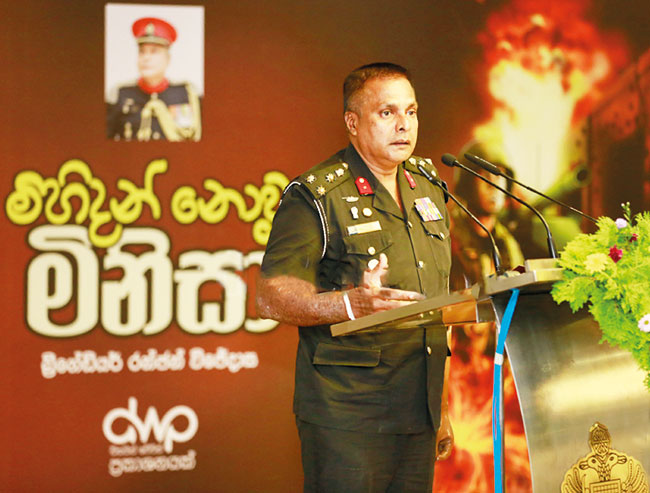SPECIAL REPORT : Part 494
The utterly duped Sri Lanka government had no qualms in bending backwards to appease the LTTE in so many ways believing the so-called peace facilitators to the bitter end, despite the LTTE violating virtually all CFA rules.
Viking peace facilitators took the Lankan leaders on right royal ride by making them believe in the Tigers to the bitter end. A case in point is the payments made by the then government in respect of an undisclosed number of brand new four-wheel drive double cabs acquired by the LTTE from Toyota Lanka (Pvt.) Ltd. According to a letter sent by S. Pulieedevan of the LTTE Peace Secretariat, dated
January 26, 2004, to Bradman Weerakoon, the Secretary to Premier Ranil Wickremesinghe, the government had paid Customs duty, surcharge, excise Duty, PAL, VAT and BTT for those double cabs. The LTTE only paid the CIF value of the vehicles. During the Vanni battles, the Army captured double cabs mounted with anti-aircraft guns. These double cabs could have been among the vehicles acquired from Toyota Lanka. What really baffled the public is that the LTTE received such special status even 10 months after it quit the negotiating table.
By Shamindra Ferdinando
The creation of Hamas now fighting Israel can be easily compared with the formation of the Liberation Tigers of Tamil Eelam (LTTE) and other Tamil groups in the late 70s. Hamas is an Arabic acronym for Islamic Resistance Movement.
Hamas and the LTTE were meant to undermine the elected representatives of the Palestinians, and the Tamil speaking community, respectively. That was one of the primary objectives of those who initially sponsored Hamas and the LTTE and other Tamil groups which gave up separatist agenda during Ranasinghe Premadasa’s tenure as the President (Jan. 02, 1989, to May Day, 1993).
Later objectives of the sponsors and strategies of Hamas and the LTTE changed over the years as they rapidly expanded, drawing funding from many other sources. Both groups achieved conventional status, and the losses they inflicted on governments were an indication of their military prowess. When Israel, the founding benefactor of Hamas, stopped funding it, regional powers, opposed to the Jewish State, stepped in, in a big way.
The LTTE went to the extent of killing Rajiv Gandhi who, in his capacity as the Indian Premier, forced Sri Lanka to accept the deployment of the Indian Army here (July 1987-March 1990) to impose a solution that suited New Delhi’s overall strategy at that time. Gandhi was killed in May 1991 by an LTTE suicide bomber during an election rally in Tamil Nadu. During the IPKF deployment here the LTTE humiliated India by killing over 1,300 officers and men whereas Hamas stunned Israel with an unprecedented Oct. 07 attack after a spate of large scale attacks/confrontations over the years. Israel fought three wars with Hamas in 2009, 2012 and 2014 and the current conflict is so far the worst.
Last week The Island dealt with some of the issues at hand in an article titled Vanni war and Israel-Gaza conflict: similarities and differences. The writer felt the need to discuss the Indian financial package that helped turn a Sri Lankan armed group into one of the world’s most sophisticated fighting machines. But soon after India halted funding terrorism here, the LTTE expanded its vast network of revenue sources here and overseas. One of its new-found sponsors happened to be the government of Sri Lanka.
Before we further discuss the LTTE funding/revenue sources, it would be pertinent to mention how Israel facilitated the growth of Hamas to undermine the Palestinian Liberation Organization (PLO) and faction, Fatah.
Brig. Gen. Yitzhak Segev, who had been the Israeli military governor in Gaza in the early 1980s, is on record as having told the New York Times that he had helped finance the Palestinian Islamist movement as a counterweight to the PLO and Fatah.
New York Times quoted the retired Brig. General as having disclosed how the military government funded Hamas through mosques. Number of others had commented on the Israeli funding for Hamas. Perhaps one of the most significant statements pertaining to the Jewish state’s affiliation with Hamas was made by Avner Cohen, one-time Israeli religious affairs official who served the Gaza administration for over two decades. Wall Street Journal in 2009 quoted Cohen as having declared: “Hamas, to my great regret, is Israel’s creation.” That was the year Israel fought its first war with Hamas. Cohen has revealed the warning he issued to the Israeli government in the mid-80s over its divide-and-rule strategy in the occupied region. The Wall Street Journal quoted the Israeli as having said: “I … suggest focusing our efforts on finding ways to break up this monster before this reality jumps in our face.”
The US, the UK, France or EU didn’t find fault with Hamas at the time Israel promoted Hamas at the expense of the PLO and Fatah. Israel is paying a very heavy price for what can be called a strategic miscalculation in their policy.
Jayantha Dhanapala on states sponsoring terrorism
Over a year after the successful conclusion of the war against the LTTE, the late Jayantha Dhanapala, one-time UN Under-Secretary-General for the Office for Disarmament Affairs from 1998-2003, appeared before the Lessons Learnt and Reconciliation Commission. Dhanapala, the career diplomat, who has had diplomatic postings in London, Beijing, Washington DC, New Delhi and Geneva and also performed ambassadorial duties in Geneva accredited to the UN from 1984-1987 and in Washington DC from 1995-1997 addressed the entire gamut of issues on Aug. 25, 2010.
Dhanapala dealt with the contentious issue of governments sponsoring terrorism with the focus on the Indian funding of the LTTE. Perhaps, Dhanapala may not have taken President Ranasinghe Premadasa’s funding and arming of the LTTE into consideration. Let me reproduce what the erudite former diplomat Dhanapala who served as the head of the Norwegian-funded Secretariat for Coordinating Peace Process (SCOPP 2004-2005) declared before the LLRC: “Now I think it is important for us to expand that concept to bring in the culpability of those members of the international community who have subscribed to the situation that has caused injury to the civilians of a nation. I talk about the way in which terrorist groups are given sanctuary; are harboured; are supplied with arms and training by some countries with regard to their neighbours or with regard to other countries. We know that in our case this happened, and I don’t want to name countries, but even countries who have allowed their financial procedures and systems to be abused in such a way that money can flow from their countries in order to buy the arms and ammunitions that cause the deaths, the maiming and the destruction of property in Sri Lanka are to blame and there is therefore a responsibility to protect our civilians and the civilians of other nation States from that kind of behaviour on the part of members of the international community, and I think this is something that will echo with many countries in the Non-Aligned Movement where Sri Lanka has a very respected position and where I hope we will be able to raise this issue.”
The writer covered the LLRC proceedings for The Island throughout the sittings held at the Lakshman Kadirgamar Institute (LKI) named after the much-respected Foreign Minister slain by the LTTE. Actually, Dharnapala’s statement, regardless of its importance, never received the government attention it deserved. In fact, the government simply ignored it. The then Rajapaksa government was more preoccupied in playing politics with the accountability issue than addressing the concerns of the Tamil speaking people and the Western powers who had to woo the vociferous Tamil Diaspora for their local vote bank.
Dhanapala not only dealt with India but underscored the responsibility of Western powers who allowed the LTTE to raise funds in their countries to wage war here. The sinking of nearly a dozen floating LTTE arsenals over the years in Indian waters, Sri Lankan waters, and on the high seas, revealed the extent of the funding available to the LTTE. The LTTE had a range of weapons, including heavy artillery, shoulder fired anti-aircraft missiles, anti-tank missiles, underwater equipment and fast boats. Acquisition of such an arsenal couldn’t have been done without unlimited funds. The group had so much funds it hired foreigners and went to the extent of making an attempt to bribe a US State Department official.
Nearly 15 years after the war, only India knows how much the Gandhi governments spent on establishing a massive terrorist project in Sri Lanka. In fact, the LTTE demanded compensation from India to cover up losses the group suffered in the wake of the 1987 Indo-Lanka peace accord. The LTTE wanted compensation for the denial of its right to tax people living in areas under its control and those who entered that region.
It would be pertinent to mention that India spent not only on the LTTE but also on nearly half a dozen Tamil groups, including the Eelam People’s Revolutionary Liberation Front (EPRLF) and the Tamil National Army (TNA) that was formed in the wake of India’s decision to withdraw its troops from the then temporarily merged Northern and Eastern Provinces after the Premadasa government asked them to leave unceremoniously.
How Sri Lanka funded LTTE
During the war, the then Opposition MP Bandula Gunawardena, in his own hand writing, released a statement that dealt with payments made to the LTTE at the behest of President Ranasinghe Premadasa. Lawmaker Gunawardena who now served the Wickremesinghe-Rajapaksa Cabinet, disclosed that the Treasury made the largest single payment months after the eruption of Eelam War II in the second week of June 1990. According to the document issued by MP Gunawardena, the first payment had been made on August 09, 1989, a couple of months after the LTTE initiated talks with Premadasa while the Indian Army was deployed here. Altogether, there had been 15 payments of Rs 5 mn each on 15 separate occasions, with the largest and the final payment of Rs 50 mn paid on Nov. 05, 1990.
At the time of these payments, R. Paskaralingam had been the Secretary to the Treasury and he couldn’t have resisted the orders issued by the President. Premadasa also had no hesitation in issuing a large stock of T-56 assault rifles and ammunition to the LTTE. His administration also issued weapons to other Tamil groups. Perhaps, Sri Lanka should officially acknowledge the type and the amount of weapons issued to Tamil groups and the funds paid to them.
Let me remind the reader that the last and the largest payment was made many months after the LTTE executed several hundred surrendered policemen in the East after they were ordered to do so by the then government and overran isolated Army detachments along the Kandy-Jaffna road, north of Omanthai. As a result, the Army lost the overland Main Supply Route (MSR) route to Jaffna. The MSR was restored in January 2009, nearly 19 years after the military suffered defeat in the Vanni.
During the conflict, successive governments accepted the LTTE’s right to tax people living in areas they controlled. Those entering the region under its control, too, were taxed.
But following the signing of a one-sided Ceasefire Agreement (CFA) with the LTTE in Feb. 2002. arranged by the Norwegian facilitators ,unknown to many, including then Commander in Chief President Chandrika Bandaranaike Kumaratunga, the then government did away with all restrictions. Overnight, the government accepted a region under exclusive control of the LTTE where the group denied the right of other Tamil political parties to engage in political activity. The LTTE was granted special status. The government paved the way for the LTTE to receive substantial foreign funding and also bring in a range of equipment through the Bandaranaike International Airport (BIA) without checks.
Funding for LTTE radio
Only Hamas really knows what it did with funds received from Israel. Similarly, only the LTTE knows what it really did with funds received from Sri Lanka during the conflict. Let me examine one incident during the 2002-2003 period that involved Sri Lanka, Norway and the LTTE on the basis of disclosure made by Bradman Weerakoon, the then Secretary to Premier Ranil Wickremesinghe, regarding the agreement on an LTTE proposal to install and operate an FM station in Kilinochchi.
Weerakoon, in an article titled ‘Initiating and Sustaining the Peace Process: Origins and Challenges’ included in ‘Negotiating Peace in Sri Lanka: Efforts, Failures and Lessons’ discussed the circumstances under which the equipment had been brought into the country, with the support of the Norwegians. Weerakoon described the agreement on the FM station as a confidence building measure.
The upgrading of the LTTE propaganda arm took place following the closure of Vanni Sevaya and restrictions on the Army with regard to dissemination of security related news. (Vanni Sevawa catered especially for the armed forces, police and Sinhala civilians living in the area)
Having described the installation of the new equipment as a confidence building measure, Weerakoon inadvertently exposed the despicable LTTE strategy. Had it been a genuinely confidence building measure, the LTTE would have discussed their move to establish an FM station before ordering the equipment.
Weerakoon discussed in considerable detail how the LTTE had conducted the transaction with the help of the Norwegians. Weerakoon said: “The Political headquarters of the LTTE in a letter to the PM’s Office on Oct. 1, 2002, informed the government that it had purchased a new FM transmitter, which they would like to bring to Vanni to be used in their dissemination campaign about the peace process. The equipment had already been purchased by them in Singapore at a cost of USD 93,265 and was on the way by sea. The letter requested customs clearance and duty free importation and no delay.”
Weerakoon also revealed how the Norwegians utilized their diplomatic status to clear the LTTE cargo duty free by substituting itself as the consignee of the goods. But once the Norwegians handed over the goods to the LTTE through SCOPP (Secretariat for Coordinating the Peace Process), the SCOPP became liable for duty amounting to Rs. 3 mn, which according to Weerakoon, was paid with funds made available by Norway to the SCOPP. Weerakoon estimated the annual donations received by SCOPP from Norway at Rs. 12 mn.
Weerakoon admitted that the LTTE had informed the government of its move, while the cargo was on its way to Colombo and the Norwegians stepped in at the right moment to have the equipment delivered to the LTTE.
A treacherous government ordered the Army to transport the equipment from Colombo port to Omanthai and hand them over to the LTTE, while their Vanni Sevaya remained closed.
While Weerakoon referred to Norwegian funds being utilised to pay for import duty, the then Director General of SCOPP, Dr. John Gooneratne claimed using funds received from Sweden. The revelation is made in a letter Gooneratne wrote to Treasury Chief, Charitha Ratwatte. The letter dated Jan. 16, 2004, referred to the role played by the Prime Minister’s Office in carrying out the controversial transaction.
Wouldn’t it be interesting to know, at least now, who actually paid duty for the LTTE equipment?
Funding through government
Sri Lanka obviously believed the LTTE wouldn’t accept a political solution and the group couldn’t be defeated on the battlefield. Therefore, the group granted the opportunity to tax the people in the North and East, whereas Western powers turned a blind eye to massive fund raising projects undertaken by the LTTE in Europe, the US and Canada as well as other countries. How much did the LTTE spend on acquiring and operating a fleet of large ships to store arms, ammunition and equipment in the high seas and transfer weapons as and when required?
The LTTE brazenly used the CFA to secure funds even from the international community. The then government fully cooperated with the LTTE strategy.
Former respected MP Rajiva Wijesinha, during his tenure as Secretary General of SCOPP, and during the initial phase of the Vanni offensive that was launched in March 2007, made a shocking revelation regarding funds received by the LTTE. In response to Prof. Jayadeva Uyangoda’s criticism of the SCOPP, Prof. Wijesinha issued a statement titled ‘Sri Lanka’s civil society organizations: Shady techniques and bribes to the Tigers?’
Wijesinha dealt with hitherto unknown funding operations arranged by the UNP government in support of the peace process facilitated by the CFA. One of the grants-UNDP project worth USD 600,000 signed by Bradman Weerakoon who was also the Commissioner General for the Coordination of Relief, Rehabilitation and Reconciliation as well as the External Resources Department raised eyebrows.
Wijesinha expressed surprise at the signing of the agreement on Dec 19, 2003 amidst deepening political turmoil caused by President Chandrika Bandaranaike Kumaratunga suspending Parliament. She also sacked three ministers and brought the Army on to the streets of Colombo. However, what Prof. Wijesinha didn’t say that by then the LTTE had quit the negotiating table. Why did the government authorize such a huge amount of UNDP funds for the so-called LTTE Peace Secretariat nine months after the LTTE suspended its participation in the Norwegian arranged talks? Prof. Wijesinha pointed out that the UNDP funding was made available to the LTTE just months ahead of the general election. Did the UNDP realize what it was doing?
The LTTE-backed Tamil National Alliance (TNA) recorded its best performance at the general election held in early April, 2004. The Parliament conveniently forgot what the EU polls observation mission said about the LTTE helping the TNA to secure over 20 seats in the Northern and Eastern Provinces by stuffing ballot boxes. This was against the backdrop of the devastating split in the LTTE caused by Vinayagamoorthy Muralitharan alias Karuna Amman, one-time commander of LTTE formations which thwarted Operation Jayasikurui in the Vanni theatre in 1997/1998 period.
The writer intended to discuss the funding made available by various interested parties, including governments to those who promoted the peace process involving the LTTE over a period of time.
The Hamas attack on Israel should influence Sri Lanka to examine various aspects of the conflict that was brought to an end through military means-an effort so far unmatched by any country since the end of World War II.
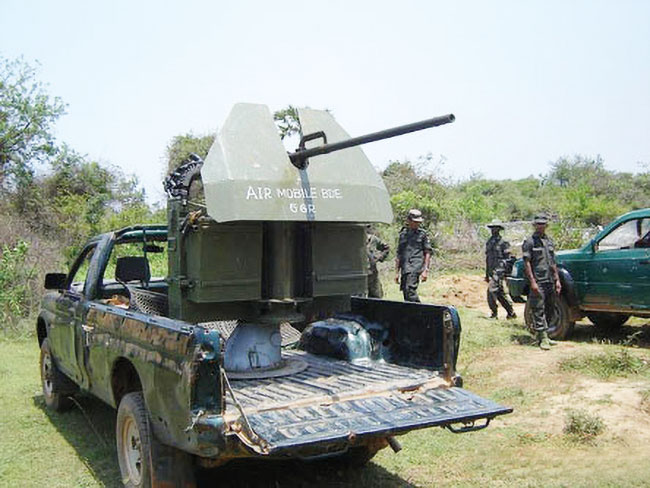
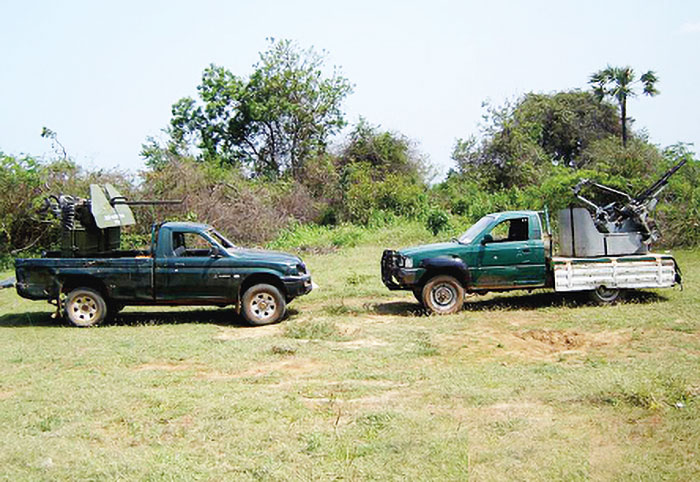
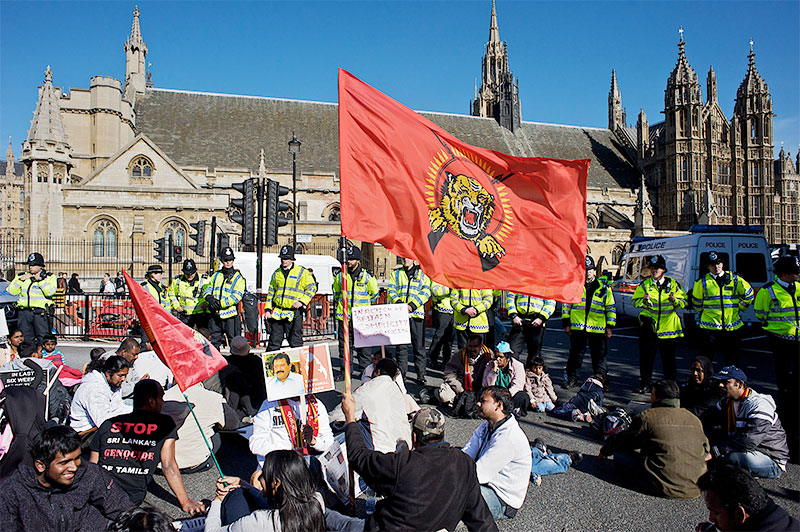
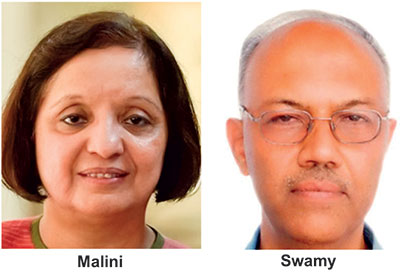 UK Premier Rishi Sunak pledged unequivocal support for Israel before flying to the Jewish State where he reiterated British commitment. Sunak followed US President Joe Biden, the first foreign leader to visit Tel Aviv amidst indiscriminate attacks on Gaza. At the time this comment was written on Oct 22, the international media reported the possibility of French President Emmanuel Macron also undertaking a visit to Tel Aviv. Canada, too, declared support for Israel. Their declaration of support for Israel didn’t surprise anyone.
UK Premier Rishi Sunak pledged unequivocal support for Israel before flying to the Jewish State where he reiterated British commitment. Sunak followed US President Joe Biden, the first foreign leader to visit Tel Aviv amidst indiscriminate attacks on Gaza. At the time this comment was written on Oct 22, the international media reported the possibility of French President Emmanuel Macron also undertaking a visit to Tel Aviv. Canada, too, declared support for Israel. Their declaration of support for Israel didn’t surprise anyone.